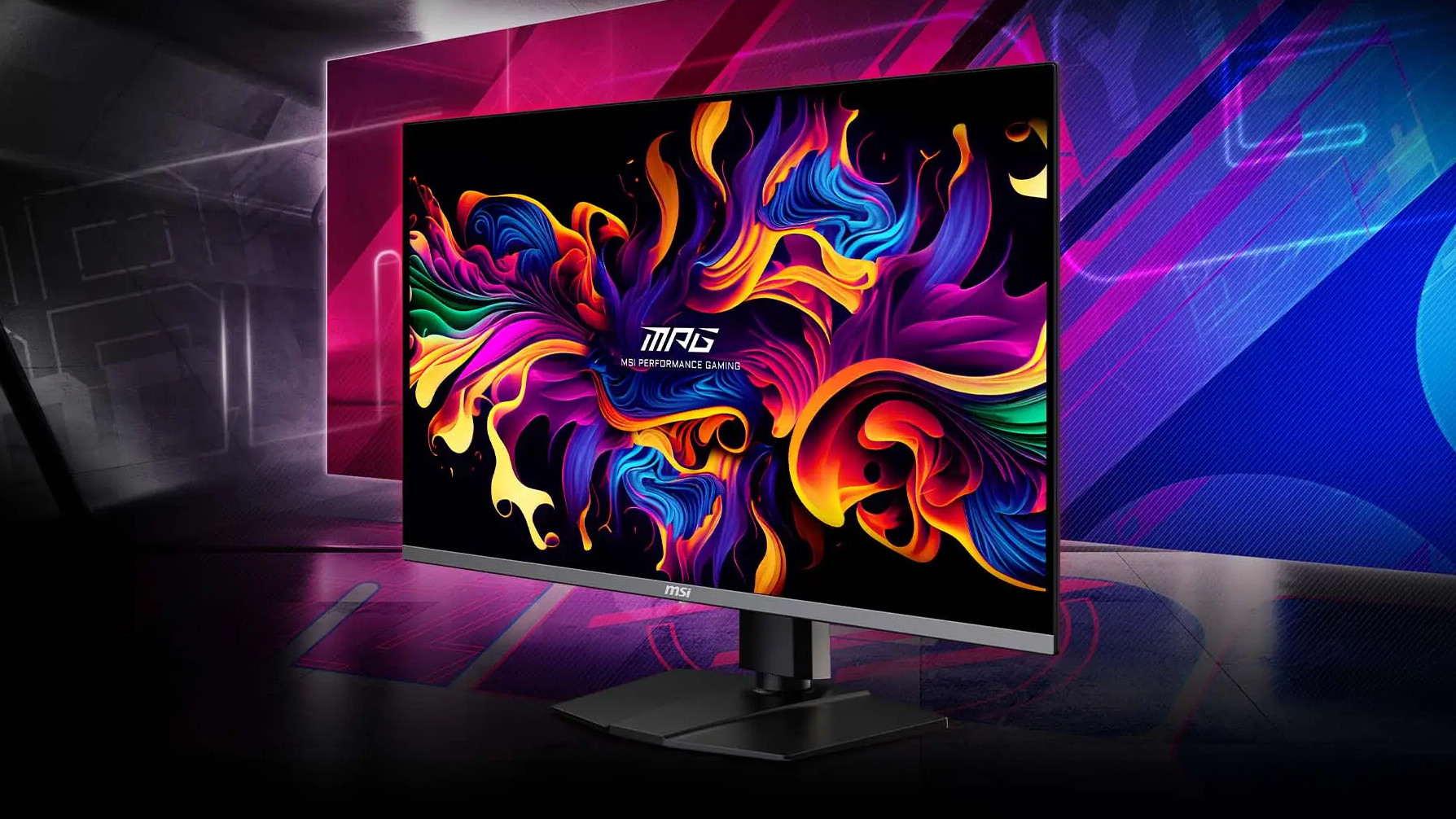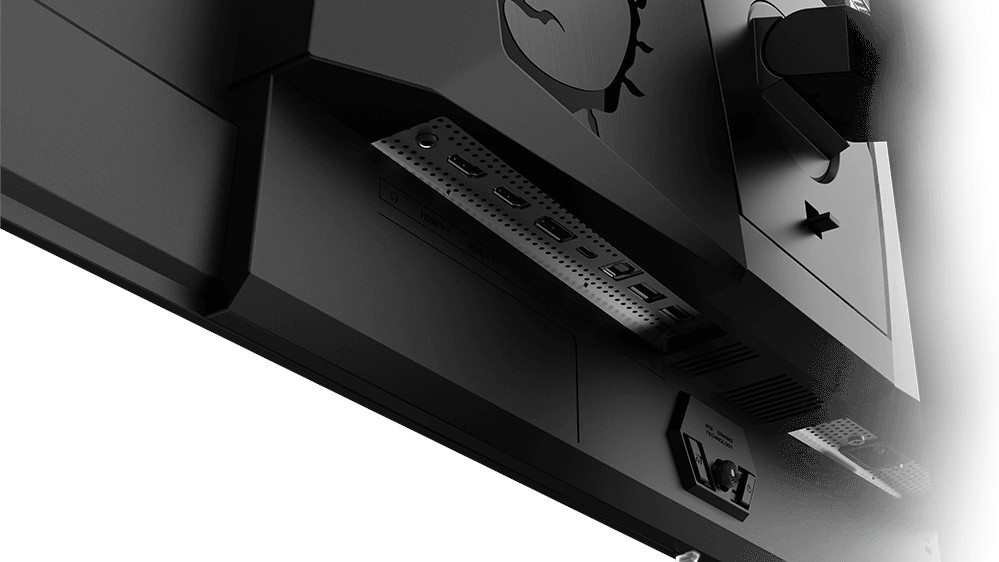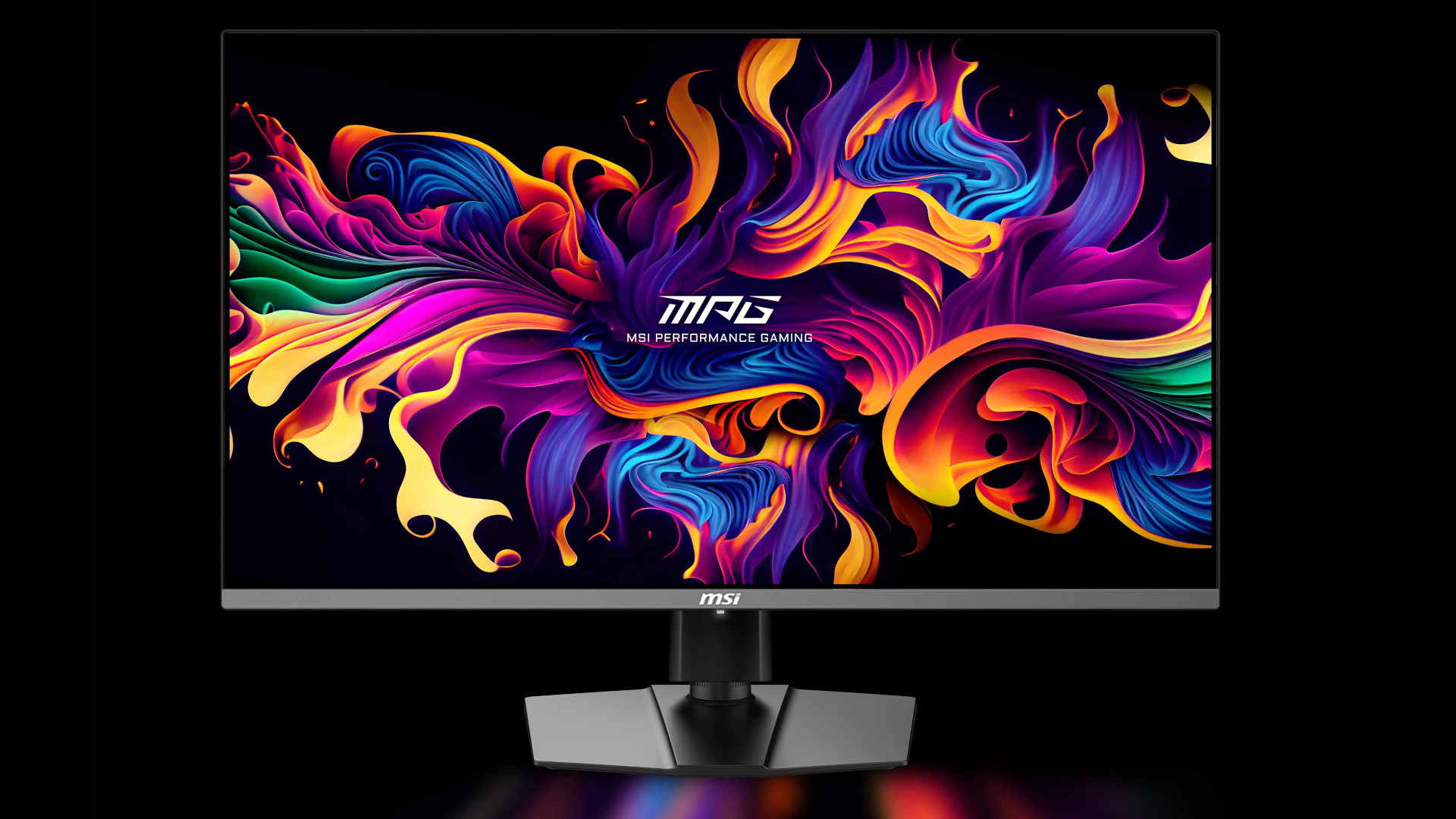MSI’s 32-inch 4K OLED monitor looks like a stunner – but its AI features could prove seriously controversial
Is the AI-powered future of gaming monitors set to be a tricky path to tread?

MSI showed off a new monitor at CES 2024 that turned heads, for sure, not just with its jaw-lowering spec – but also due to what could be a controversial AI-powered bonus feature.
Let’s start with the spec, though: the MSI MPG 321URX is a 32-inch 4K monitor with a QD-OLED panel (16:9 aspect ratio) and a 240Hz refresh rate. Add to that a 0.03ms response time and a claimed 1,500,000:1 contrast ratio (with Display HDR 400 support) and you’ve got a seriously compelling core set of specifications.
Expecting to pay a ton of cash for such a 4K monitor? Well, it’s not cheap – in what world would such an OLED monitor be affordable, after all – but according to Hardware Unboxed, it’ll run with a price tag of $1,199 in the US. (Projected availability is soon: in the spring, or maybe even February 2024, but that’s not certain, and neither is that price until it’s officially confirmed).
The price has been pretty well received, on the whole, and it may be relatively temptingly priced to compete with other inbound monitors using that same QD-OLED 240Hz panel (which has been long awaited by PC gamers, it should be noted).

The other key point here is that MSI has added AI chops to the MPG 321URX, and as mentioned, this could be a divisive introduction, particularly the new SkySight feature pointed out by Tom’s Hardware.
This detects enemies appearing on the mini-map in League of Legends and flags them up on-screen with a big icon on the HUD, so you can’t miss their presence and the direction they’re coming from.
While a highly skilled player wouldn’t miss stuff like that on the mini-map anyway, lesser League of Legends players might, so having it pointed out by a monitor with the equivalent of a big flashing neon sign is helpful. Or even cheating, some might well argue. (Other help is lent to League of Legends players, too – the RGB light bar that nestles beneath the bottom bezel of the monitor is synced to the in-game health bar, to give a prominent indication of that status).
Get daily insight, inspiration and deals in your inbox
Sign up for breaking news, reviews, opinion, top tech deals, and more.

Analysis: Leagues ahead of other PC gamers?
There are a few things to unpick here before accusations of ‘cheating’ start flying around. That’s a pretty triggering word to use, of course, because when you think of cheats, images of aimbots and other superpowered abilities spring to mind – measures that give a devastating advantage to the player abusing the cheat.
SkySight is more a case of augmentation than such outright cheating – an additional help feature, and as mentioned, it’s one that more skilled players won’t need (as they’ll be monitoring the mini-map constantly in their peripheral vision anyway, and won’t need things flagging – it’d be a distraction for them if anything).
Where this gets trickier is because the functionality takes place on-board the monitor – the display output, away from the PC hardware and operating system running the actual game – making it undetectable, or so Tom’s asserts. (And that makes sense – we can’t imagine how this would be detected by game servers). So, this isn’t something game developers could take action against even if they wanted to.
The MPG 321URX’s AI powers aren’t just about helping League of Legends addicts, either. MSI has said it’s bringing out an app that’ll allow for training the monitor to recognize enemies, or health status, in any game. Your PC’s processor will be needed to actually train the AI, but the monitor will work autonomously with its own onboard chip after that process has been completed.
In case you were wondering, MSI wouldn’t be drawn to comment on exactly what the onboard silicon present in the monitor that drives the AI consists of. So, we’re kind of in the dark for the moment as to how all this works, really.
We guess the danger is where this path of AI augmentation, we’ll call it, might lead – and where lines might be drawn in terms of helping the player, and what could be more readily regarded as cheating.
Monitors already have features like imposing a crosshair for more accurate aiming (in games that don’t have them), facilitating sniper-like zooming, or artificially brightening up shadowed areas so you can better see players (or indeed NPCs) lurking in them. And with the march of progress with AI having clearly started in the world of monitors, we’re betting that some boundaries are going to be pushed, and then perhaps stepped over – some might argue this MSI monitor is already doing the former.
There’s an undeniable buzz around this new MSI MPG 321URX, though, and as mentioned more screens built with the same QD-OLED panel will be powering products trying to get on our list of the best gaming monitors. MSI also has a 27-inch (1440p, 240Hz) version of this monitor coming, and how much more affordably that’ll be priced is being keenly anticipated.
Check out our CES 2024 hub for all the latest news from the show as it happens. We'll be covering everything from 8K TVs and foldable displays to new phones, laptops, smart home gadgets, and the latest in AI, so stick with us for the big stories. And don’t forget to follow us on TikTok for the latest from the CES show floor!
Darren is a freelancer writing news and features for TechRadar (and occasionally T3) across a broad range of computing topics including CPUs, GPUs, various other hardware, VPNs, antivirus and more. He has written about tech for the best part of three decades, and writes books in his spare time (his debut novel - 'I Know What You Did Last Supper' - was published by Hachette UK in 2013).